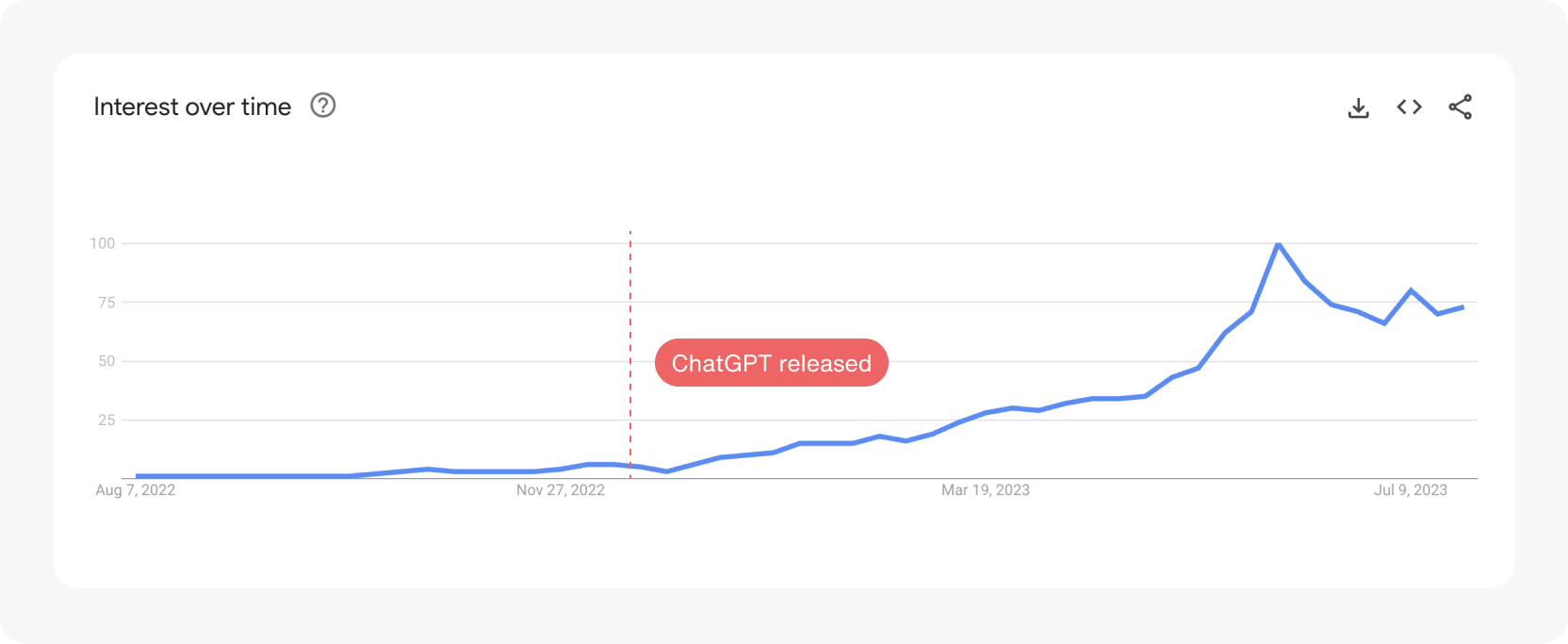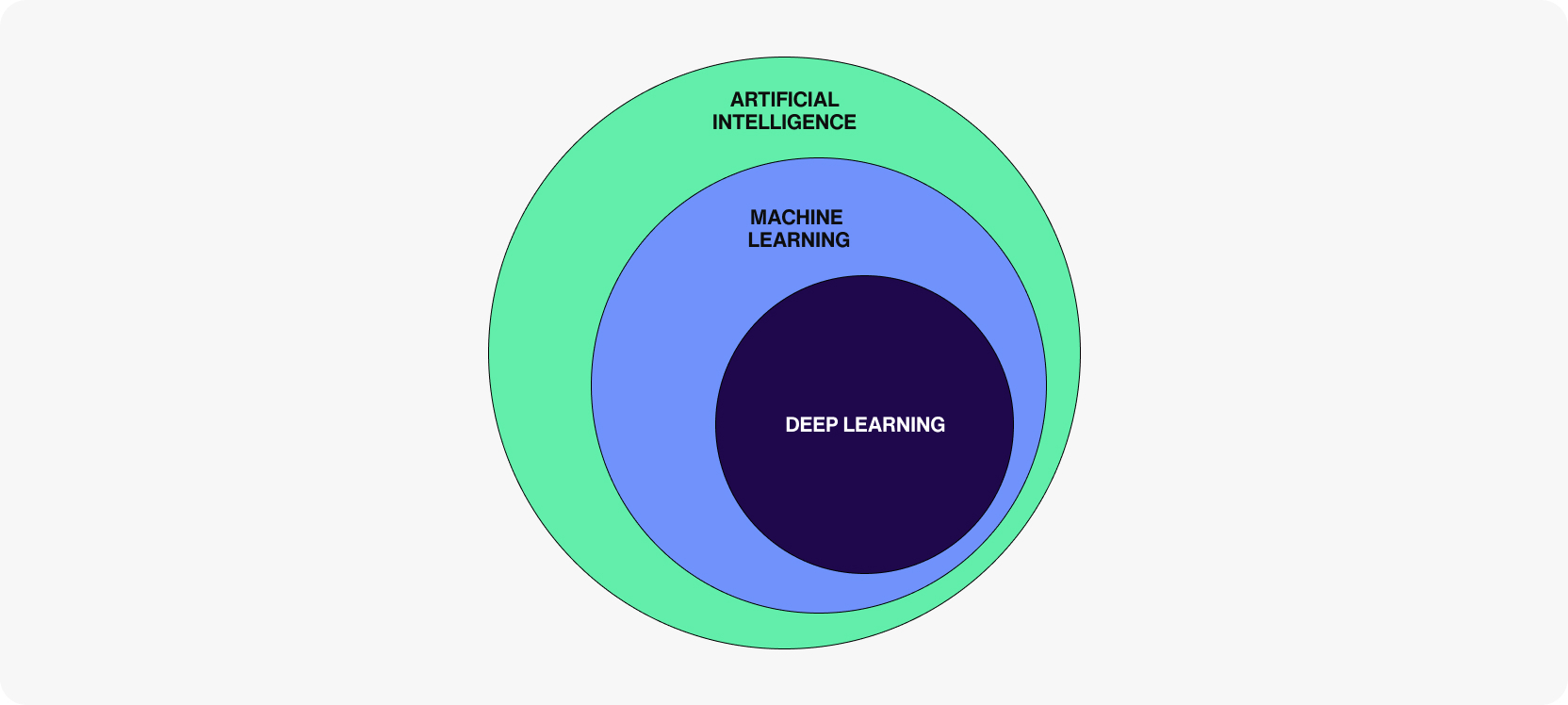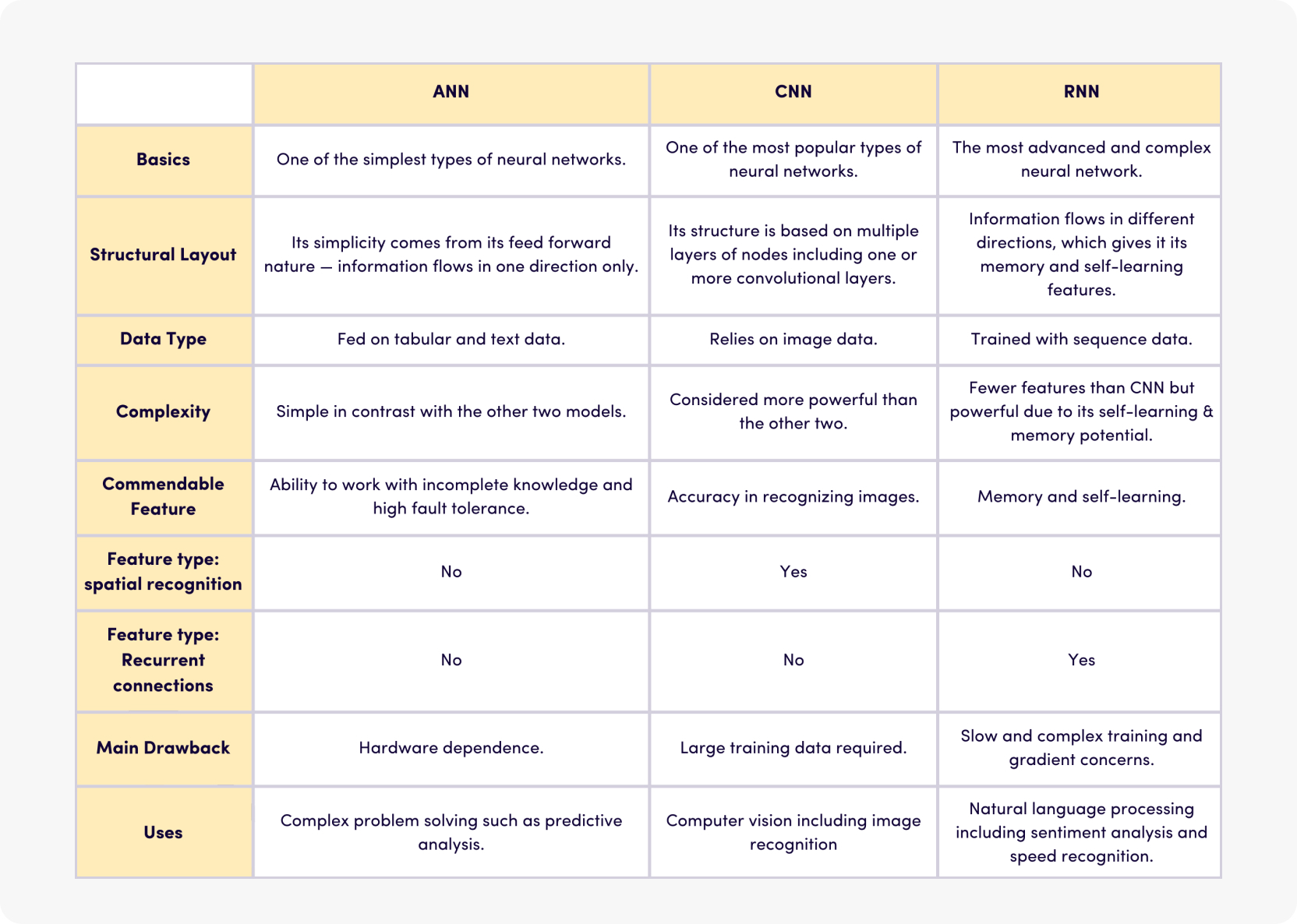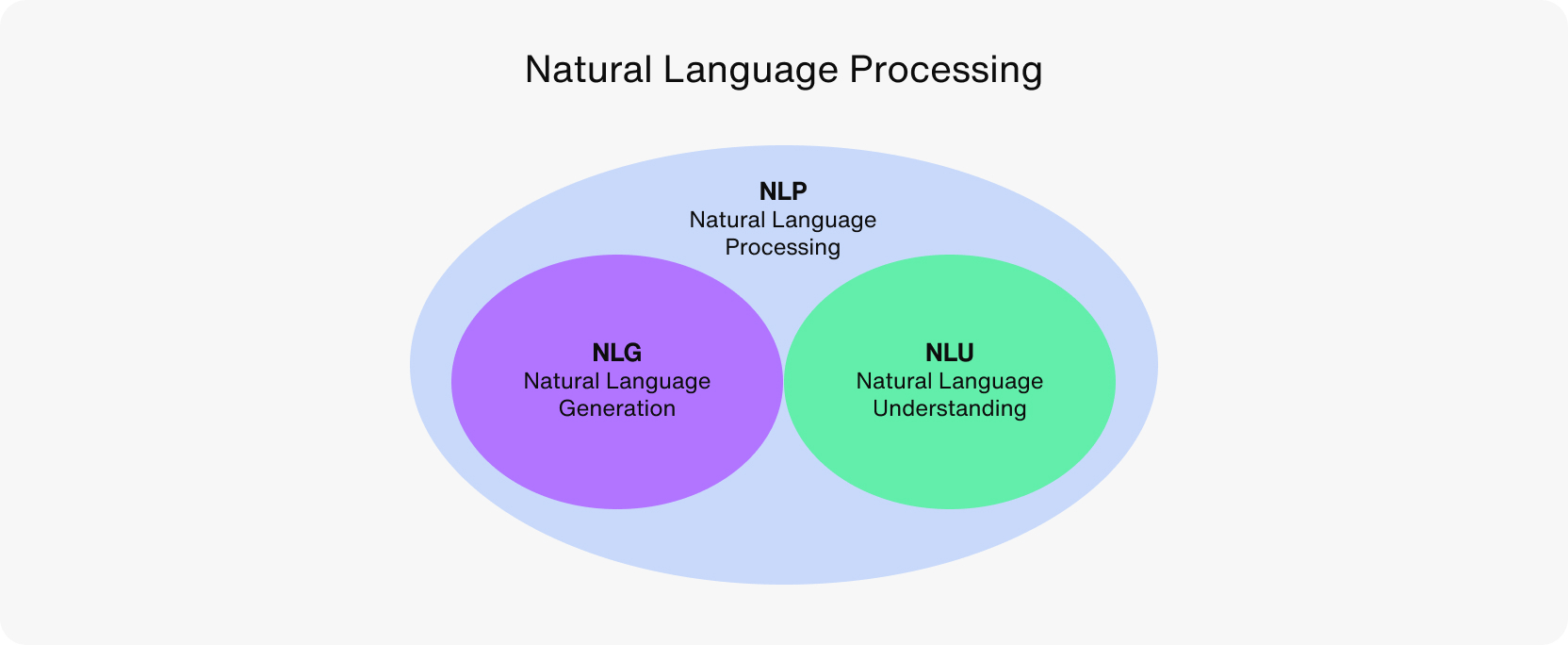Generative AI foundations: An introduction to basic generative AI concepts
The explosion of worldwide interest in generative AI
ChatGPT’s explosive success has fueled a worldwide rise in interest in generative AI.
As we can see from Google Trends data, interest in generative AI increased significantly after ChatGPT was released in November 2022.

While generative AI is an interesting field that underlies many modern business AI applications, generative AI tends to be a bit of a black box for those not versed in basic AI concepts.
In this article, we’ll demystify some generative AI concepts that you need to know. We’ll talk about AI concepts that underlie generative conversational AI as it relates to chatbots.
Want to start from the very basics?
Check out this blog about generative AI.
Want to know what generative AI means for your company?
Head over to this blog to find out.
One of the basic AI concepts you need to know: What is generative AI?
Before we go any further, let’s define generative AI.
What is generative AI? According to McKinsey, “Generative artificial intelligence (AI) describes algorithms (such as ChatGPT) that can be used to create new content, including audio, code, images, text, simulations, and videos.”
A generative AI model will create new content that closely resembles examples similar to the data it has ingested. Generative AI models take raw data - which can be anything from a technical user manual to a description of artwork - and create a statistically probable output. Generative AI models are trained on massive datasets; the larger the dataset, the more information the model has to work with while being trained.
When we talk about generative AI, we often use many related terms. What are these terms and what do they mean?
Important AI concepts you need to know
While you’re likely familiar with some of the terms mentioned here, the below are useful definitions. We'll also discuss how these terms overlap.
AI (Artificial Intelligence): An umbrella term that refers to the ability of computers to mimic human intelligence and perform tasks that humans can do to a similar or greater level of accuracy. (Source) AI can sense, reason, and adapt.
ML (Machine Learning): According to AWS, “ML is the science of developing algorithms and statistical models that computer systems use to perform complex tasks without explicit instructions. The systems rely on patterns and inference instead.” (Source) The performance of ML algorithms improves as they are exposed to, and learn from, data over time.
DL (Deep Learning): According to GeeksforGeeks, Deep Learning is a subfield of Machine Learning that involves the use of neural networks to model and solve complex problems. (Source) Neural networks are based on the structure and function of the human brain. Deep learning networks learn from large amounts of data and improve on their own by discovering patterns in data.

💡 ML is AI but AI is not necessarily ML!
Similarly, DL is ML but ML is not necessarily DL!
Neural network: According to DeepAI, a neural network is “...a computational learning system that uses a network of functions to understand and translate a data input of one form into a desired output, usually in another form.” Neural networks are modeled on the process by which neurons in the human brain work together to understand sensory input.
Artificial Neural Network (ANN): A type of neural network “that consists of several processing elements that receive inputs and deliver outputs based on their predefined activation functions.” (Source) An ANN is a feed-forward network (data travels in only one direction) which is useful for pattern recognition, speech-to-text uses, and predictive analysis. (Source)
Convolutional Neural Network (CNN): A type of neural network that is “used primarily for image recognition and processing, due to its ability to recognize patterns in images. A CNN is a powerful tool but requires millions of labeled data points for training.” (Source) A CNN is can be used for computer vision and photo tagging suggestions.
Recurrent Neural Network (RNN): An RNN is the most advanced type of neural network. An RNN “RNN works on the principle of saving the output of a particular layer and feeding this back to the input in order to predict the output of the layer.” (Source) They have internal memory, which allows the network to remember things about the input it received, and then use this to make precise predictions about the future. (Source) An RNN is used for applications such as natural language processing and sentiment analysis.
Here’s a useful comparison and more details about the types of neural networks:

Large Language Models (LLMs): According to TechTarget, “A large language model (LLM) is a type of artificial intelligence (AI) algorithm that uses deep learning techniques and massively large data sets to understand, summarize, generate and predict new content.” Put simply, an LLM has been trained on vast amounts of data in order to be able to generate similar, statistically probable content. A transformer model is a type of LLM and is used to generate human-like content in terms of text, code, and images. (Source)
Natural Language Processing (NLP): According to AWS, “Natural language processing (NLP) is a machine learning technology that gives computers the ability to interpret, manipulate, and comprehend human language.” NLP helps to analyze and process text and speech data. It can be used to analyze large documents, call center recordings, and classify or extract text.
Natural Language Understanding (NLU): According to Qualtrics, Natural Language Understanding (NLU) is a field of computer science that analyzes what human language means, rather than simply what individual words say. It helps in the analysis of unstructured text, speech, and driving actions such as directing customers to the appropriate service departments.
Natural Language Generation (NLG): According to Qualtrics, “Natural Language Generation, otherwise known as NLG, is a software process driven by artificial intelligence that produces natural written or spoken language from structured and unstructured data.” NLG can be used for many things from writing summaries of reports to analyzing and generating personalized, humanlike responses to customer support queries.
💡NLP vs NLU vs NLG
NLP, NLU, and NLG are all related terms. In a nutshell, NLP is an umbrella term that encompasses NLU and NLG.

Build on generative AI concepts: Ready to create a chatbot powered by generative AI?
We’ve talked about some important generative AI concepts and how they relate to chatbots. Why not try to put this knowledge into action and build your own chatbot widget, powered by ChatGPT? You can also check out a demo of what this might look like, or create your own.
We recommend that you create a free Sendbird account so that you can take advantage of all the advanced chat features that Sendbird Chat offers. From messaging essentials like read receipts and push notifications to advanced features like translation and polls, integrating Sendbird Chat into your product is a great way to enhance user engagement and ultimately revenue.
If you want to start a discussion, check out the Sendbird Community. For more information about Sendbird products such as Calls, Live, or Notifications, please contact us! Our experts are happy to help.
Happy generative AI-powered chatbot building! 🤖







